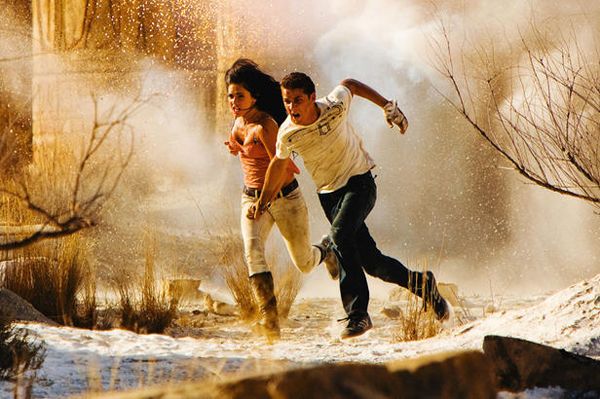
Thematically, Transformers: Revenge of the Fallen is just as good as its predecessor. Unfortunately, it falls short in other important ways, S. T. Karnick writes.
Critics hated it, audiences flocked to it. Transformers: Revenge of the Fallen received overwhelmingly bad reviews but still managed to break a box office record by taking in $60.6 million on its opening day. The sequel to the 2007 blockbuster Transformers brought in $201.2 million in its first five days, just $2.6 million behind record-holder The Dark Night.
However, as I’ve had the occasion to note before in this publication and elsewhere, a film sequel’s first few days of box office results are usually a reflection of audiences’ feelings about its predecessor, not the sequel itself. That seems to be the case with Transformers 2, which has much of the same appeal as Transformers but is missing something vital.
Transformers: Revenge of the Fallen is not really much different from the first Transformers film in terms of its themes and ideas, but one of director Michael Bay’s usual strengths as a filmmaker is lacking in Transformers 2: personalities. As I noted in my review of Transformers, " the real strength of the film is the human element."
Although never strong on logic or physical plausibility, Bay’s "real strength is in creating characters we really care about and then testing their courage and moral strength," as I wrote in that earlier article. In addition, I noted, "the image of the protector is strong in Bay’s films. Evildoers threaten, and protectors always arise to save those who aren’t able to do so themselves. Bay’s films create a straightforward moral universe in which some people want to exploit others, and other people step forward to try to stop them."
Certainly this film has all the other strengths found in Transformers. It’s crazed, chaotic, frenetic, full of astonishing battle scenes, and so on. Unfortunately, it also manifests in greater profusion a problem with the previous film: Because much of the imagery in the action scenes involves fast-changing alterations of the transformers in unfamiliar configurations, many parts of the action scenes move too quickly for the human cortex to process.
That proves disorienting and sometimes quite annoying, though it will likely make the DVD a worthwhile investment for teens who want to slow down the scenes and be more able to appreciate the undoubtedly interesting and certainly complex imagery of the transforming machines.Personally, I wouldn’t find it worth the effort, however, so all I get is the aggravation, which is probably true for most of the audience.
That would be a minor concern if not for a much bigger problem with Transformers: Revenge of the Fallen. Films dealing with robots always run the risk of the machines having more personality than the human characters, and that is pretty much the case here, alas.
Shia LaBeouf brings some charisma and good acting ability to the film, though his character is really not particularly interesting or unusual. Most of the other performers are also at least fairly good, with John Turturro a particular standout as a mad conspiracy theorist who happens to be correct.
The film does pause for some dialogue scenes, especially in the first hour, which is a wise choice in that it allows the filmmakers to establish a reasonably strong complement of human concerns at the center of the film. But as soon as the machines appear, they grab all the attention. As a result, all the actors except Turturro are largely overshadowed by the big machines and mad action.
 Megan Fox is on hand to supply the necessary sex appeal for the teenage and post-adolescent males who were undoubtedly expected to constitute the great majority of the audience. I found her performance difficult to discern, however, because I was continually bemused by the fact that she seems to have been designed by cartoonist Tex Avery.
Megan Fox is on hand to supply the necessary sex appeal for the teenage and post-adolescent males who were undoubtedly expected to constitute the great majority of the audience. I found her performance difficult to discern, however, because I was continually bemused by the fact that she seems to have been designed by cartoonist Tex Avery.
On the positive side of the ledger, Christian imagery and themes are prominent, as they were in Transformers. For example, the first Decepticon robot villain is known as "the fallen," both the hero and the transformer Optimus Prime are resurrected from death, there is an apocalyptic battle between good and evil forces, two sides of otherworldly beings engage in warfare over the destiny of humanity, and the film makes continual references to Lebeouf’s character as the "chosen one" who is destined to save all of humanity from destruction by the Satanic decepticon.
In addition, there is an explictily Evangelical Christian thought in the film, as it posits that the Decepticons and Autobots can choose what side they will be on
That’s all to the good. It’s a pity that the film’s weaknesses are so fundamental that the messages are liable to be lost.
—S. T. Karnick
